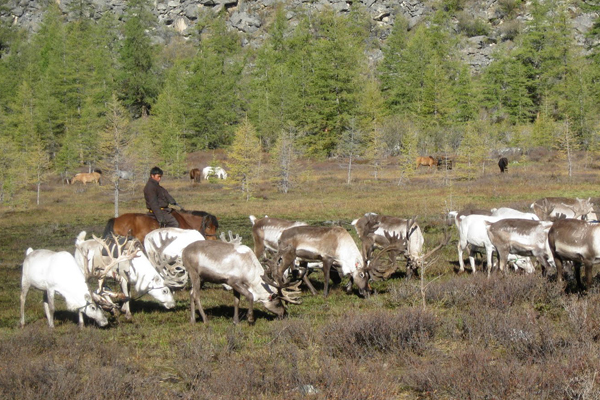

The Tsaatan people of northern Mongolia are a nomadic people who depend on reindeer for nearly all aspects of survival, as well as cultural, spiritual, linguistic, and economic identity. There are small ethnic Tuvanian people originated from Russian Siberia. Today just over 200 Tsaatan individuals live in the Mongolian taiga, an ecosystem characterized by larch trees, high moisture, and sub-arctic conditions. They move regularly within two main camp areas, between West and East Taiga, seeking pasture for their deer. Tsaatan maintain small herds of between 7 and 160 reindeer per family. Reindeer are milked daily, providing the staple component of the Tsaatan diet largely consisting of reindeer dairy products. They are an essential mode of transportation in the high mountain, road-less taiga. The people living in the northern part of Mongolia (Darkhad, Tsaatan, Khotgoit,) still maintain the ancient shamanic traditions. Mongolian shamanism is a practice that involves a practitioner reaching altered states of consciousness in order to encounter and interact with the spirit world, and channel these transcendental energies into this world. A shaman is a person regarded as a having access to, and influence in the world of benevolent and malevolent spirits, who typically enters into a trance state during a ritual, and practices divination and healing.
Recommended


Mongolian winter is the most incredible winter that one might experience and there is plenty to see and enjoy during a winter travel. Glittering white snow, clear fresh air, sun, and little chills are the image of Mongolian winter. Taking this fan...
Duration: 3 Days / 2 Nights
Destination: Gobi - Central


All of Mongolians celebrate the Lunar New Year, which is called in Mongolia “Tsagaan Sar” or the “White Moon”. It is widely celebrated throughout the country around January or February according to the combination of Solar-...





